| |
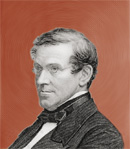 |
| |
Charles Wheastone (1802-1875).
He was knighted by Queen Victoria in 1868.
|
| |
BT Heritage |
Wheatstone
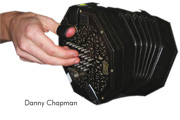 |
|
|
The scientist invented the forerunner of the concertina, the “Symphonium,”
in 1829, and patented the concertina itself in 1844. |
|
Bridging distance through telegraphy
Charles Wheatstone is perhaps most widely known for a device which he did
not, in fact, invent: the Wheatstone bridge. Rather, he popularized practical
use of an instrument developed by Samuel Hunter Christie in 1833, which
Wheatstone realized could be used to measure the electrical resistance of a
circuit. Nevertheless, Wheatstone was an important innovator who created the
world’s first public telegraph system. And to answer the question posed in
September’s Pioneers’ Page, he was also the inventor of a popular musical
instrument, the concertina.
A musical background
Wheatstone was born into a musical family in 1802, in Gloucester in the west
of England. After they moved to London, Charles was apprenticed in the family
music shop. He helped to attract business by making an “Enchanted Lyre” which
astonished customers by emitting the sounds of various musical instruments. In
fact, the “telephonic” lyre was simply a sounding box suspended from a solid rod
connected to instruments played out of sight on the floor above.
In 1823, Wheatstone proposed that a communications system be constructed
between London and Edinburgh using sound transmitted through rods. However, it
was the electrical production of signals that was to be the next focus of his
research. Wheatstone became Professor of Experimental Physics at King’s College,
London, in 1834 — the first person to hold that position. In the same year, he
achieved fame when he made the first-ever measurement of the speed of
electricity in a wire.
Schilling, Cooke and Wheatstone
There had been experiments with sending signals using electricity since the
mid-18th century. Practical proposals only became possible, though, after the
discovery by Hans Christian ěersted in 1820 that an electric current can deflect
a magnet. This principle was employed by Baron Pavel Lvovitch Schilling, a
Russian diplomat and engineer who, in 1832, made the world’s first
electromagnetic telegraph, linking two rooms inside his home in St Petersburg.
An Englishman, William Fothergill Cooke, heard about this invention in 1836 and
became keen to commercialize it.
| |
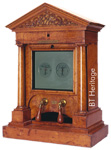 A double-needle telegraph in an ornate case, reputedly used for signaling
directly to buckingham Palace in London A double-needle telegraph in an ornate case, reputedly used for signaling
directly to buckingham Palace in London |
| |
BT Heritage |
Cooke (1806–1879) tried designing a telegraph system, but could not make it
work. He therefore proposed a partnership with Wheatstone, who could provide the
scientific skills while Cooke contributed his business acumen. Wheatstone had
already been working on an electromagnetic telegraph system and, in June 1837,
the two men filed a joint patent in London. Their device used five needles, two
of which were moved when a key completed or broke a circuit in a battery,
sending electricity down the wire to an electromagnet at the other end. The
deflected needles pointed to letters of the alphabet.
An experimental telegraph line, about 2.5 km long, was laid alongside railway
tracks in north London. On 25 July 1837, Wheatstone sent the first message and
Cooke replied. Wheatstone later recalled that “never did I feel such a
tumultuous sensation before, as when, all alone in the still room, I heard the
needles click and, as I spelled the words, I felt all the magnitude of the
invention pronounced to be practicable beyond cavil or dispute.”
Capturing a world first
The system was used to create the world’s first commercial telegraph line in
1839, covering some 22 km along the Great Western Railway from London. It was
extended in 1841, and the innovation was advertised as a public attraction.
However, what really drew people’s attention to the potential of telegraphy was
the capture of a murderer on 1 January 1845. John Tawell had killed his lover,
Sarah Hart, in a town near the railway. To escape, he took a train to London. He
might have succeeded, had not the police used the new telegraph to signal his
description to the terminus. On his arrival, Tawell was arrested. He confessed
to the crime and was subsequently hanged.
Moving to Morse
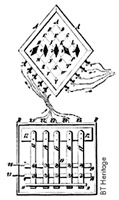 |
|
|
In the five-needle telegraph, two needles at a time were deflected to point
at a letter. |
|
The five-needle telegraph had the advantage of not requiring a skilled
operator, but it needed multiple circuits and this meant higher installation and
maintenance costs. Wheatstone and Cooke made the device simpler, introducing a
double-needle and then a single-needle telegraph. These needed skilled operators
as they used a complex code to identify letters, based on deflections of the
needles. By 1848, some 1600 km of railway were equipped with telegraph wires
carrying messages from London to over 200 towns and cities across the United
Kingdom.
Meanwhile, in the United States, Samuel Morse and Alfred Vail had also been
working on electromagnetic telegraphy since the mid-1830s. Their system first
went into operation in 1844 and marked a paper tape to show when electric
current — and a message — was transmitted along a single wire. The “Morse code,”
patented in 1840, allowed the paper “dots” and “dashes” (and later sounds) to be
translated into text. This simpler code than Wheatstone’s was eventually adopted
as the international standard for sending messages.
| |
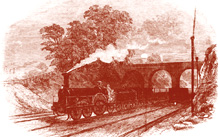 |
| |
The world’s first telegraph line followed the railway |
Wheatstone also studied the possibility of laying telegraph lines below the
sea. In 1840, he proposed such a link between Dover and Calais, and later
conducted practical experiments. He was also an expert advisor on the laying of
the first transatlantic telegraph line.
A legacy for computers
In 1841, Wheatstone patented a type-printing telegraph — the first of its
kind — which used electric current to make a hammer press a letter onto paper.
Later, he invented the automatic transmitter, which increased fivefold the
number of words that could be sent per minute in Morse code. This was done by
replacing the hand of the telegraph operator with a paper tape that had the code
punched into it. This passed through a mechanism that controlled signal
currents. Early computer designs followed this example by using punched paper
tape to input data. In this way, Wheatstone helped to link the world of
telegraphy with today’s information age.
Question for next month:
What tropical tree links telegraphy and golf?
Find the answer in the next
Pioneers’ Page.
|
|


